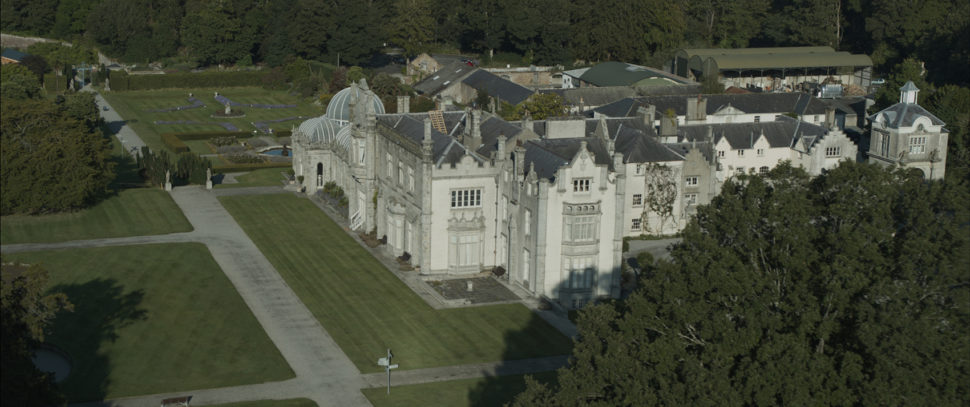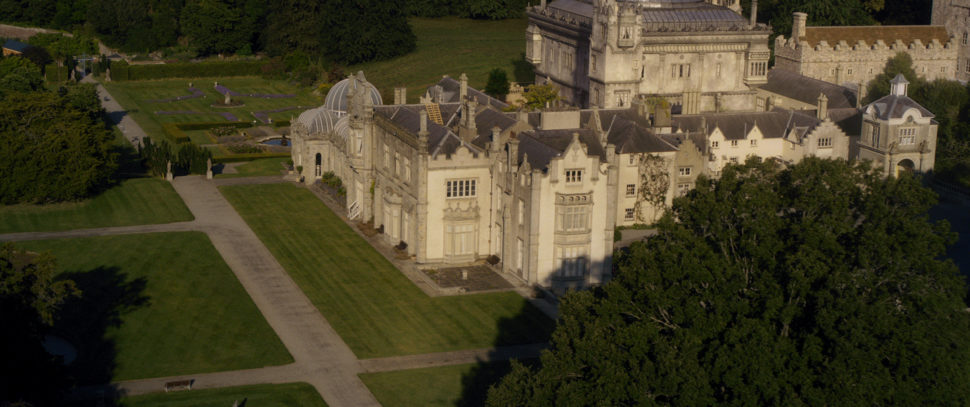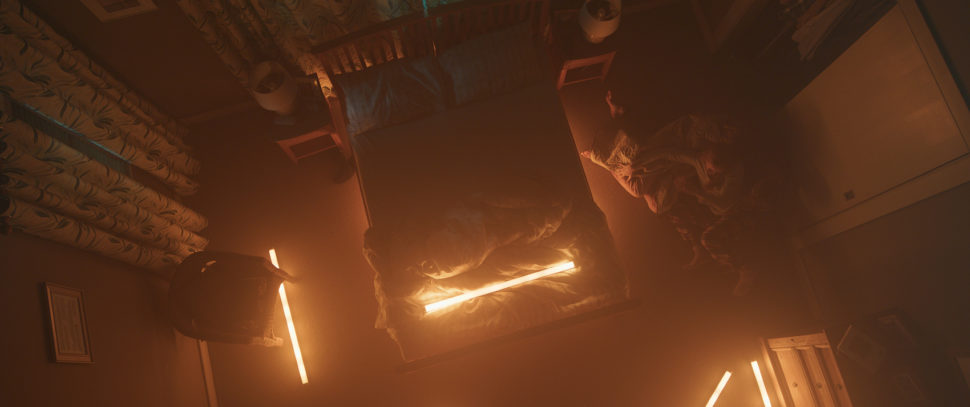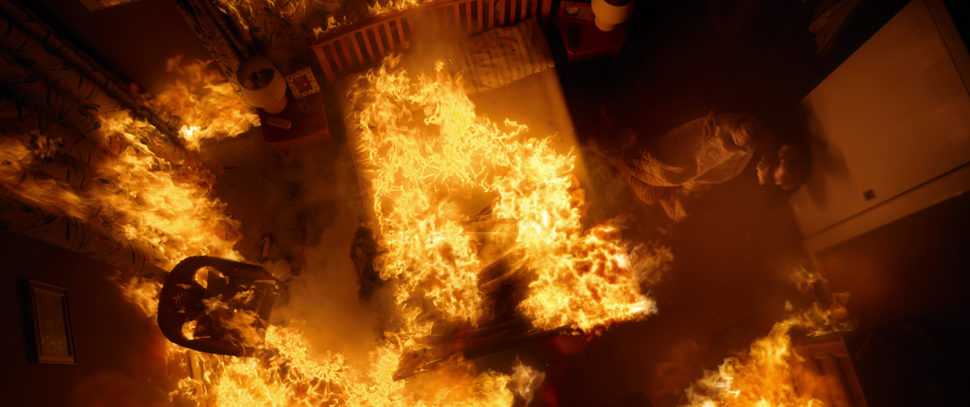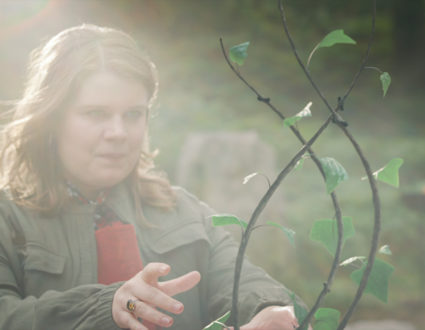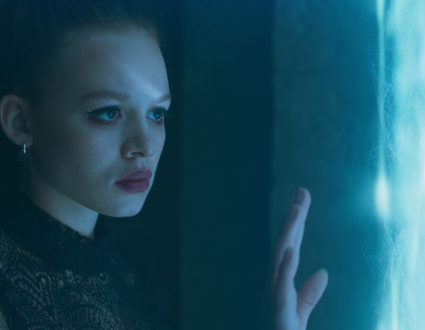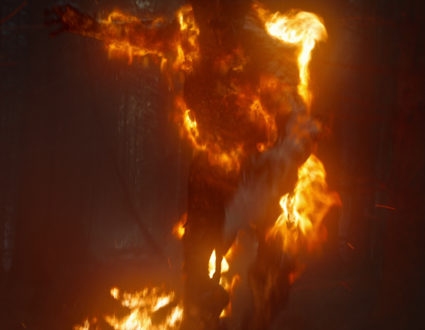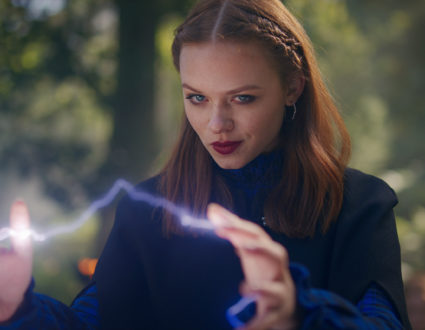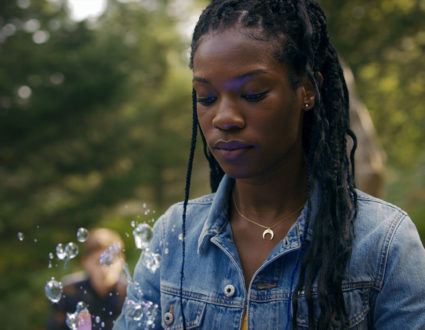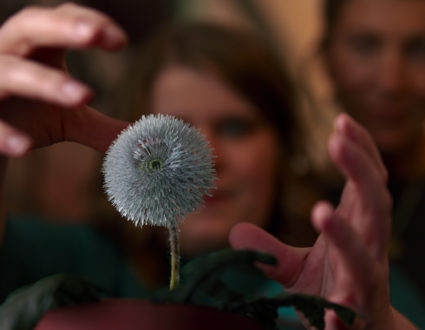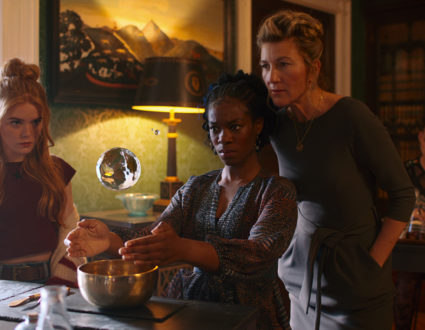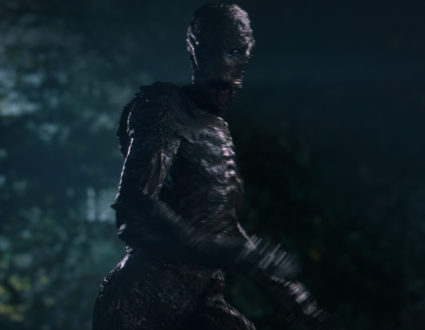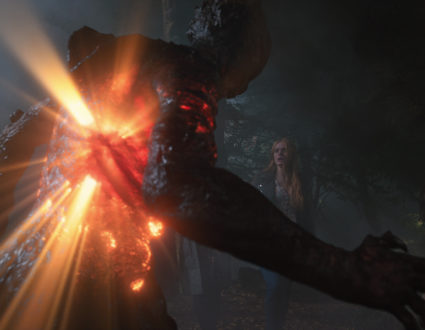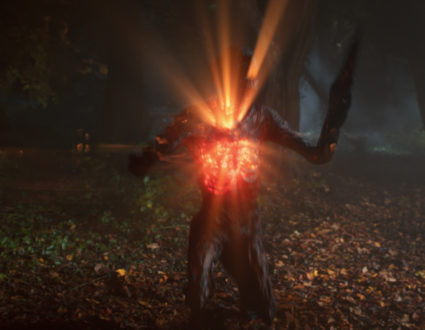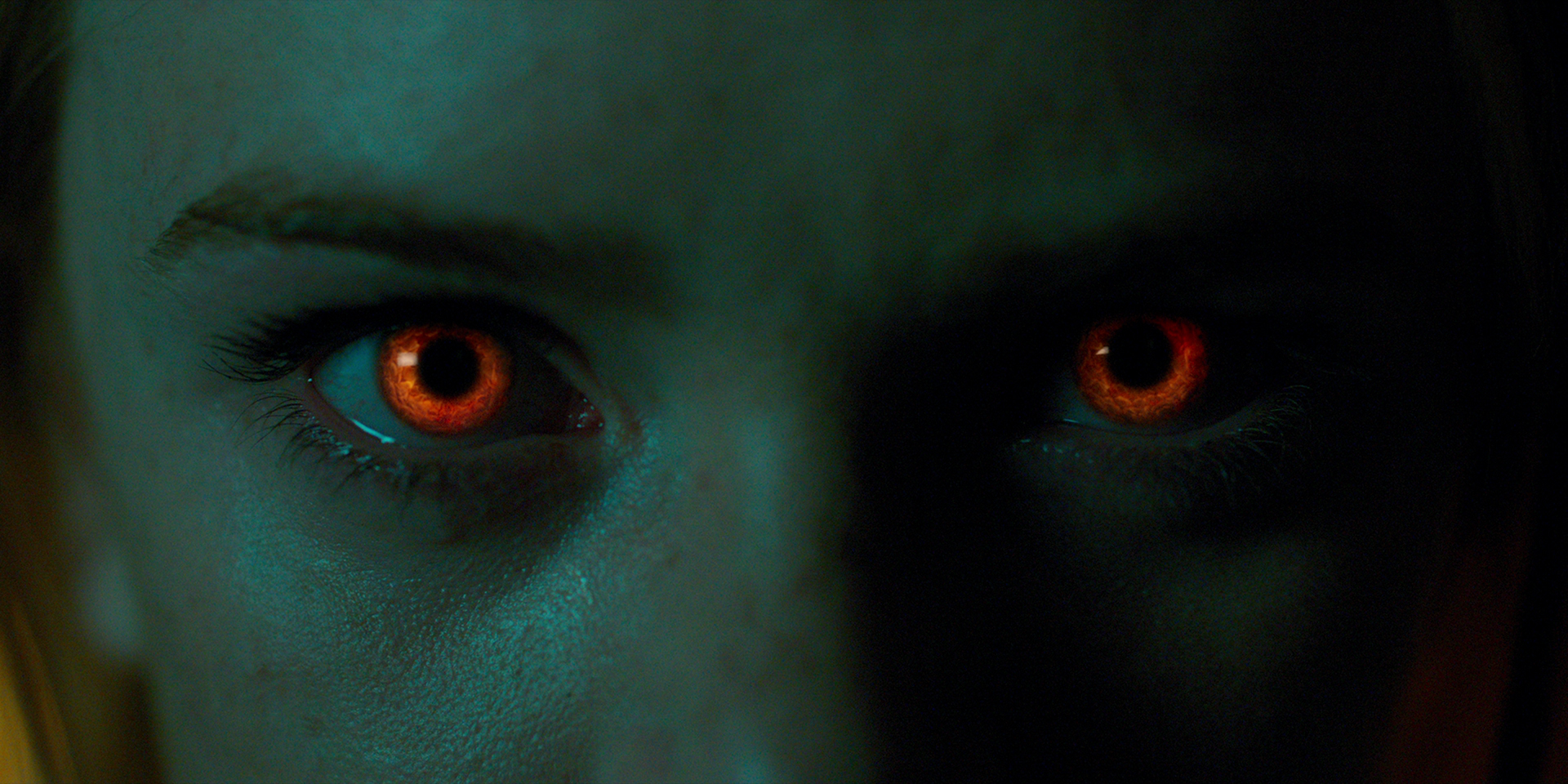
The magical realm of the Otherworld is home to Alfea, a boarding school for talented young fairies, which is where Fate: The Winx Saga is set. A group of teens learn to master their powers while navigating love, rivalries and the monsters that threaten their very existence. Magic is at the heart of this six-part Netflix series, and that’s where Cinesite came in.
The series is based around an original concept created by Iginio Straffi, who crafted the popular manga-style animated series Winx Club. This latest adaptation, although aimed at an older audience, retains many aspects of the original series.
VFX Supervisor for the production was Cinesite’s own Simon Stanley-Clamp, who was on set throughout production in southern Ireland and around Dublin, as well as on four stages at Ardmore Studios in late 2019.

The school’s exteriors were filmed mainly at Kilruddery House, a stately home outside Dublin with extensive grounds and at Luggala House in Co. Wicklow. The final Alfea was a combination of both locations, using the surrounding countryside to define the base geography which was augmented in CG. Cinesite used a lidar scan and photogrammetry of Kilruddery to build the textured and fully lit CG extensions.
“Elemental” is the defining word for the look of the VFX. The fairies’ magical powers are based around magic derived from water, fire, earth, light, air and the mind. The latter, “empaths,” possess enhanced perception which allows them to hear emotions in others. The students learn to develop and control these powers in various classroom settings. Visual effects were used to bring all of the magic to life, from sprouting CG plants to sparking electricity, levitating water orbs and the more subtly visualised powers of empaths and manipulators of light.
In the fourth episode of the series, Beatrix leads Bloom to the War Room, a place filled with maps, scrolls and battle plans. At its centre is a large, self-illuminated, sand filled basin. Beatrix’s power over electricity brings it to life and the sand rises up to form a topographical representation of Alfea, within its larger magical realm.

CG Supervisor Samir Ansari: “Our setup involved hundreds of millions of particles that were generated and simulated using a bespoke Houdini grain solver. We began with a geometry shell of the terrain and had this drive the particle simulation as well as supporting volumetric dust for the effect. As this terrain shifts and changes throughout the shot, the grains needed to be dynamic and able to adapt whilst maintaining the visual integrity of the map, ensuring it was easily recognisable and readable. The effect was then lit and fully rendered in Arnold and Gaffer.”
Barriers, both visible and invisible, appear in and around Alfea, from the protective dome surrounding the building to the mysterious forcefield the “Sanctum Lattice,” discovered by Beatrix and Bloom in a stone archway in the vaults of the school. The rippling blue latticed energy of the Sanctum Lattice was created using Houdini, with the original footage shot with careful use of lights bounced off of broken glass.
Throughout the series the terrifying creatures the Burned Ones are an ominous presence, appearing often in shadows, dimly lit. Their genesis is mysterious; they may have been created during a previous battle as the burned husks of young soldiers destroyed by a catastrophic event. They are glimpsed fleetingly in the grounds of the school, moving at lightning speed and they are deadly opponents in combat.
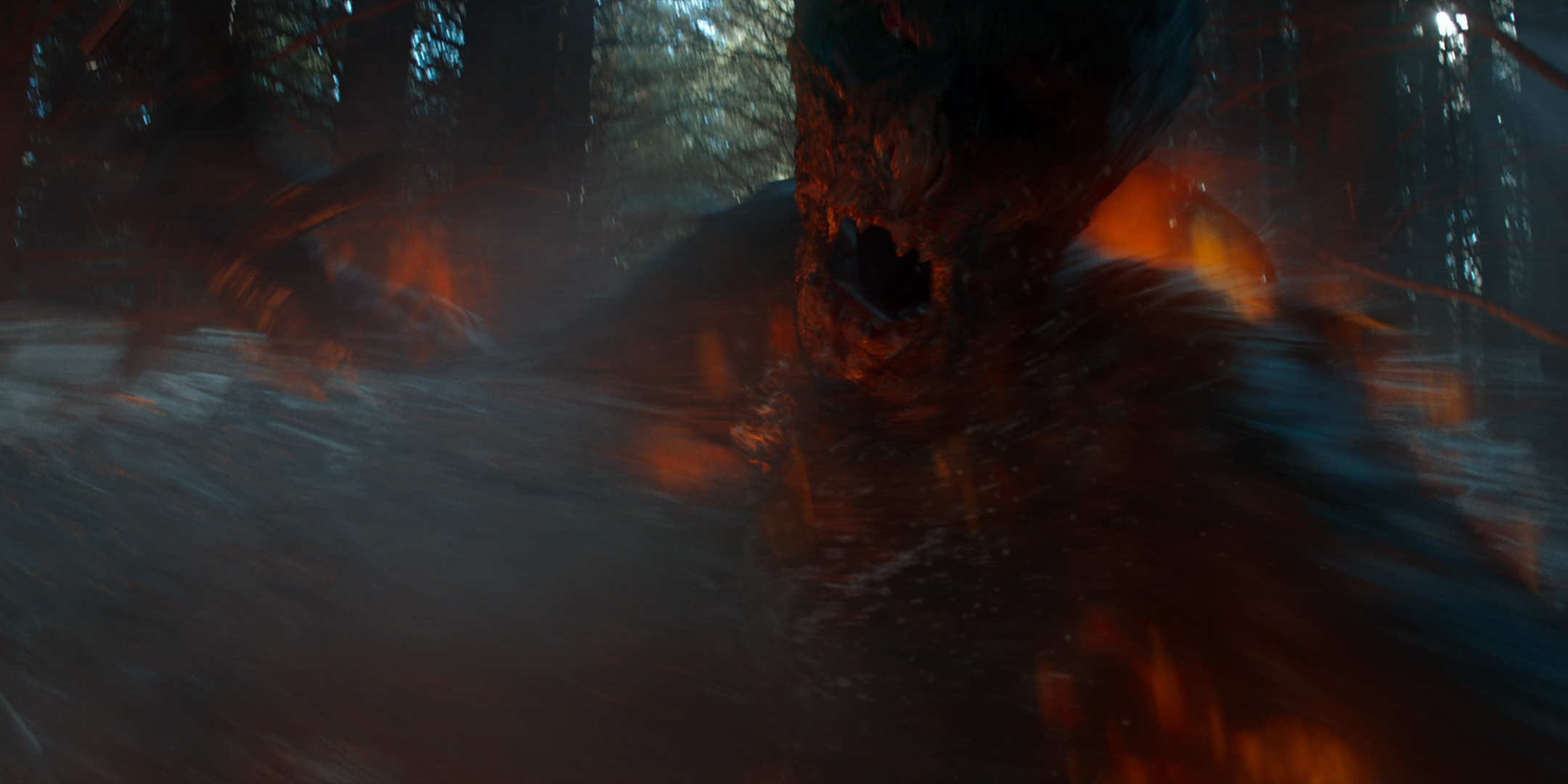
Two prosthetic suits of the top half of the creatures were built and used on set for blocking out, lighting reference and interaction by the stunt team with the actors. Visual Effects Supervisor Simon Stanley-Clamp worked closely with the stunt team to choreograph the fight sequences for the CG takeovers, with the stunt performers initially delivering performances wearing the prosthetics.
The Burned Ones are 8 feet tall and made up of burned sinews and armour melted into bones, in some places leaving gaps where tendons have contorted and pulled apart. The internal fissures, extreme height and supernatural athleticism of the creatures all required a CG solution, so ultimately the stunt actors would be replaced about 90% of the time.

VFX Supervisor Simon Stanley-Clamp: “The Burned Ones’ athleticism is supernatural. Although they’re big, they needed to be very fast and agile. My analogy was that they’re like fullbacks or rugby players, even Usain Bolt, who has that body mass but is also extremely quick on his feet; they needed to be able to cover a lot of ground quickly. There’s a fine balance between creating something that is light on its feet, but also powerful and weighty.”
The Burned Ones were constructed from the inside-out, with internal anatomy driving all else to ensure both visual realism and to establish an authentic base for the animators to bring the creatures’ movement to life. Ziva was used to simulate the many flesh and armour elements together and to make a coherent structure that would move in a realistic way whilst remaining art directable. The VFX team developed solutions which allowed them to easily balance the various material properties in tandem through hand painted texture maps, along with decisions on how the geometry was built.
Bloom, the central character in the series, has fire as her power. As her skills develop she becomes the strongest of the fairies and extensive VFX were required to add convincing flames emanating from the actress’s hands and tracking around her body as she learns to control and direct her power.

